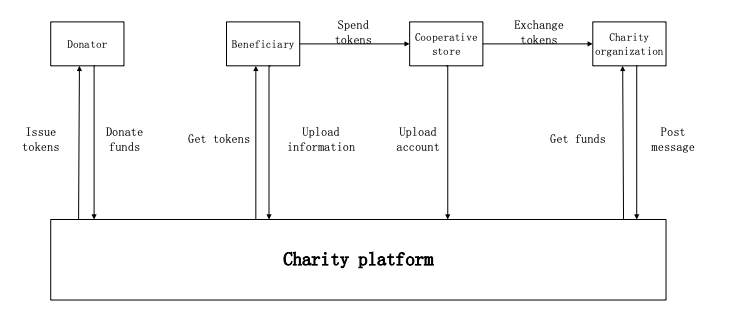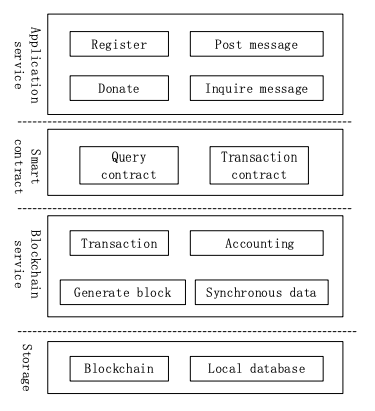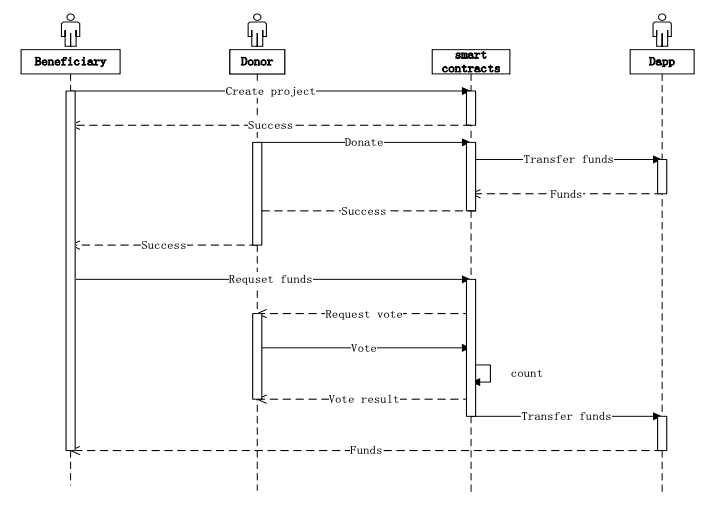Blockchain for Charity
is a reality
This page helps you better understand the LutinX approach to help your organization with Blockchain Technology, based on a comparative analysis with more than 100 different charities’ needs.

Blockchain for Charity Fundraising
This paper proposed a fundraising system based on LutinX Blockchain technology and presents the platform’s design pattern, architecture, and operational process. We hope to increase the transparency of charities to enhance the public’s trust in charities and promote the development of philanthropy by a blockchain-based charity system.
Why use Blockchain
Blockchain technology could help the images of charities willing to adopt its services.
With LutinX, charities can minimize administrative costs through automation, providing more accountability through traceable giving milestones and allowing donors to see more clearly where their funds are going.
Blockchain may help restore and increase some of the lost credibility to charities that prove worthy of the public’s trust.
The Blockchain build trust with donors, recipients, and other stakeholders to reach the right people and improve administration costs and efficacy. Show donors the difference their donation makes, acquire funds rapidly through crowdfunding, and hand control to the people you help.
In addition to solving existing problems, blockchain solutions can enable charities and non-profits to deliver results in entirely novel ways that would be impossible without the blockchain.
The Mode
Our charity system model defines four roles: donors, beneficiaries, charity organizations, and cooperative stores. The charity organizations get the information to seek help and create charity projects through the platform. Donors learn about charity projects on the platform, then donate to charity organizations. The cooperative stores supply services or goods to the beneficiaries with a trusted supply chain.

The Architecture
The application service layer encapsulates a variety of applications, including account registration, post charity information, donate funds, and inquire messages, provides users with the functions of the platform directly. The smart contract layer includes various scripts and smart contracts. It encapsulates query methods, transactions processes, and other details. The blockchain service layer implements the functions of distributed accounting of the charity platform, including package block, consensus on the transaction, broadcast block, and synchronizing data to a local database. The storage layer is used to store data, including blockchain storage and local storage

New Donations Structure
- We show the partial operation of the charity platform:
Donor after successful login, the donor browses the charity projects and selects one project to be donated. The system will check the balance of the donor account. If the balance is insufficient, the user will be reminded to deposit. The donation can be completed only the balance is sufficient. - People in need The people who need help should fill in the rescue information, which will be uploaded to the charity organization for review, and the approved projects will be posted on the charity platform. The beneficiary can check the account balance to know the project status and use the tokens in cooperative shops to obtain services or products.
- The shops provide the corresponding services or goods such as medicines or books to the beneficiaries to obtain tokens. They can exchange tokens for real money from charity organizations.
- The organization can get donation from the platform to help other people and apply money to the cooperative shops for token exchanging.

DAPP Timing
The timing diagram of the Dapp helps is:
- Beneficiary initiates a charity project in the DApp;
- Beneficiaries request funds from the charity project initiated by himself;
- Donors donate to the charity projects which he chooses;
- Donors can vote on the funding request for the charity project already participated;
- After the request for funds is approved, the funds are automatically transferred to the beneficiary’s account.

Reputation and Trust Factors
With our Suite of Applications, we support this sector to set up a step-by-step approach finalized to increase Trust.
Thanks to our Blockchain Badges, we can easily let donors and volunteers start to know this technology.
Your Charity can start the process, offering these new digital badges for membership, skills records, job promotion, and more. Your donor begins to use this technology easily. Your Donors start to share their digital badge online, on their Facebook or LinkedIn page, and the process starts.
Blockchain is known for cryptos, but its potentials is 1000% higher in terms of Trust, reputation, and social communication.


